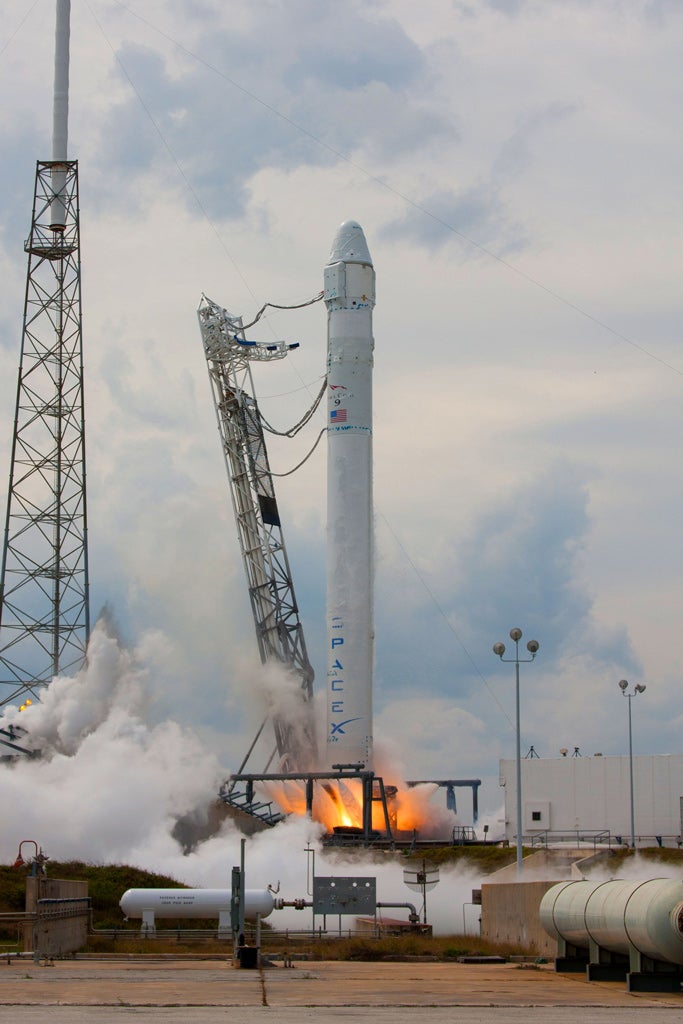Carried by a Falcon 9 rocket, the Dragon spacecraft will ferry 1,268 pounds (575 kilograms) of supplies for the space station crew and for experiments being conducted aboard the orbiting laboratory.
The Falcon 9 and Dragon were manufactured at SpaceX headquarters in Hawthorne, California, and arrived at the Florida launch site by truck. The rocket, topped with the spacecraft, stands 157 feet (48 meters) tall.
The two-stage rocket uses nine engines to power the first stage, generating 855,000 pounds of thrust at sea level, rising to nearly 1,000,000 pounds of thrust as Falcon 9 climbs out of Earth’s atmosphere. One engine powers the second stage to complete the climb to space. The 14.4-foot-tall (4.4m) Dragon spacecraft is capable of carrying more than 7,000 pounds (3,200kg) of cargo split between pressurized and unpressurized sections.
On March 2, Expedition 34 Commander Kevin Ford and Flight Engineer Tom Marshburn of NASA are scheduled use the station’s robot arm to grapple Dragon following its rendezvous with the orbiting outpost. Ground commands will be sent to attach the spacecraft to the Earth-facing port of the station’s Harmony module, where it will remain for a few weeks while astronauts unload cargo. The crew then will load more than 2,600 pounds (1,280kg) of experiment samples and equipment for return to Earth.
Dragon is scheduled for a parachute-assisted splashdown in the Pacific Ocean off the coast of Baja California on March 25.
This SpaceX flight is the second of at least 12 missions to the space station that the company will fly for NASA under the Commercial Resupply Services contract.










